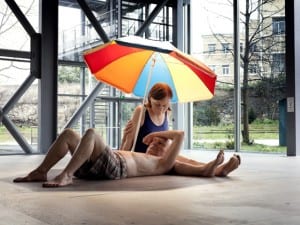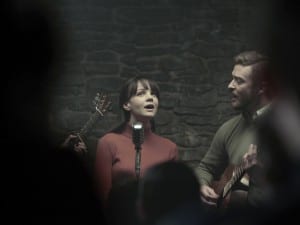Other Primary Structures is an exhibition of important sculptural work at The Jewish Museum, New York. The works are drawn from around the world and were produced between 1960 and 1970. Building upon the seminal 1966 exhibition Primary Structures, which set up Minimalism as an art class, the exhibition revisits the theme of 20th-century geometric abstraction from a global, rather than strictly Western or Northern, perspective. The first component, Others 1, runs 14 March until 18 May and presents work from 1960 to 1967. Others 2, on view 25 May until 3 August, displays work from 1967 through 1970 and includes pieces directly influenced by the 1966 Primary Structures exhibition. Aesthetica speaks to Deputy Director, Jens Hoffmann, about Minimalism and the construction of an exhibition.
A: What impact did Primary Structures have on the future development of Minimalist art?
JH: The exhibition, for the first time on a larger scale, brought together art that we consider “minimal” and due to that was very much a starting point for a larger critical investigation regarding formally reduced, abstract sculpture. It helped coin the term Minimalism which was then also applied to other fields—music, architecture, fashion, and others.
A: Can you say a few words about the art and artists included in the Other Primary Structures exhibition.
JH: The work was all made between 1960 and 1970. All works are sculptures that could be described as Minimalist even though most artists who made them would reject that term given that it was coined in the North and the West respectively.
A: How would these artists locate themselves within the art tradition?
JH: In very different ways. Each artist has her or his own relationship to it. Some do not consider themselves as a part of Minimalism at all, seeing their work more in relation to other abstract geometric traditions, and some others reject it as a purely Western movement and in fact question it on political grounds. Then there are others who actually feel they are a part of Minimalism and that they have been left out of that discussion. A lot of the Asian artists see their work emerging out of Zen culture and aesthetics, a simplicity of form in particular and very intimate relationship between objects, space, and humans. Yet, the origin of the work in the original 1966 Primary Structures exhibition at The Jewish Museum and our upcoming exhibition sits within ideas of geometric abstraction as developed in early 20th century in Europe.
A: What are the essential ideas of early 20th-century European geometric abstraction, and how do the artists in Other Primary Structures address them?
JH: Minimalism is very much a continuation of traditions of geometric abstraction as introduced by artists like Piet Mondrian, Kasimir Malevich, Joseph Albers or Max Bill for example. Work that emerged out of moments and movements like the Bauhaus, Constructivism, De Stijl and even Cubism. Reducing or eliminating all non-essential features of an object to expose the essence of a form and/or the material is what started the idea of Minimal art. Geometric abstraction is, in many ways, the essence of non-representational art. Interestingly a lot of Islamic art does the same thing, yet without the conceptual underpinnings.
A: Given the global marketplace for art today, how do you think “otherness” does or does not play out in the reception of art and the cultivation of artists?
JH: Anything can be used for or against an artist. If otherness is seen as an attribute, that can enhance the status of an artist or create more interest in the work of that artist thus raising her or his prices, then there is not much one can do about that. In the same way, it can open doors that have been closed for a long time. As with most things it’s a grey zone with probably more disadvantages then advantages. The works in the show do not address the concept of the other explicitly but many of the artists have done so themselves, writing and teaching for example.
A: What is the history of the The Jewish Museum in relationship to landmark exhibiting practices and how does Other Primary Structures reside at the forefront of current curatorial work?
JH: The museum had a period in its history in which it was the most experimental and radical museum space in the USA, mostly in the 1960s and early 1970s. Primary Structures was the most iconic show of that period, putting Minimal art on the map in a major way. With Other Primary Structures we are now revisiting our own history from a global perspective, making it not only a self-reflexive act for the Museum but also bringing the history of exhibitions into the sphere of curating in a practical manner.
A: What conceptual framework guides your foray into institutional self-inquiry and the curating of history?
JH: There is not much of a conceptual framework. It is the fourth time I am doing an exhibition about another show and each time has been very different, each time it was done in the way I thought would be most appropriate. One was a remake of an exhibition that not many people had seen so for me it was important to remake it (with remade works)—that was 9 at Castelli. Another one was a sequel looking at the legacy of the exhibition When Attitudes Become Form and how the work exhibited in that show was influential for artists born in the 1970s and 1980s. This time it is about looking at an exhibition that represents a major point in art history and bringing in artists that would have been included in this show if the art world would has been as global then as it is now. It was also important for me to start my work at the museum as a curator with a look back at the museum’s most significant show and insert my personal interests re-garding our post-colonial condition and the subjective nature of history. I wanted to look back at a moment in the institution’s history that is widely acknowledged to have been its most radical.
A: In a world where it is often said that we are concerned not with who has done something best, but who has done something most recently, how is this exhibition a departure from that trend?
JH: I usually do not worry much about trends or fashions and I think most of us work on things not for only an hour but for many years with broader concerns that are larger or more significant than momentary trends. For better or worse, a number of exhibitions and other projects I have organised have triggered trends and once that happens I usually try to move on into a different area. Once you start working with historical material the concerns shift.
A: Was “audience” a factor in creating Other Primary Structures and is there anything you would like audiences to take away from the exhibition?
JH: My work as a curator is very connected to education. This is on the one hand simply about educating the audience about certain artists, art works, art movements, but it also touches on larger social and political issues. This show is about bringing in artists from areas that the West has considered for centuries to be the margins. Only since the 1990s have we really started to pay attention to art made outside the Western context. Now we have to revise history and look at the narrative the West has created from a different perspective. Not only in art but in many other areas as well. Reality is a construction, an exhibition is a construction, civilisation is a construction and I want people to know that they can construct too, whatever they do is part of that process of constructing the world around us. We do not have to accept what we are told by those in charge, but can shape this world and make it ultimately a more generous, more rational, and more socially aware place.
Other Primary Structures, The Jewish Musuem, 1109 5th Ave at 92nd St, New York NY 10128.
Words: Odette Gregory
Credits
1. Oscar Bony (Argentina, 1941-2002), Sinusoide o Estructura, 1967, wood, paint, 63 x 67 x 472 ½ in. (160 x 170 x 1200 cm). Malba – Fundación Costantini, Buenos Aires. © Estate of Oscar Bony.
2. Installation view, Primary Structures: Younger American and British Sculptors, The Jewish Museum, 1966.





